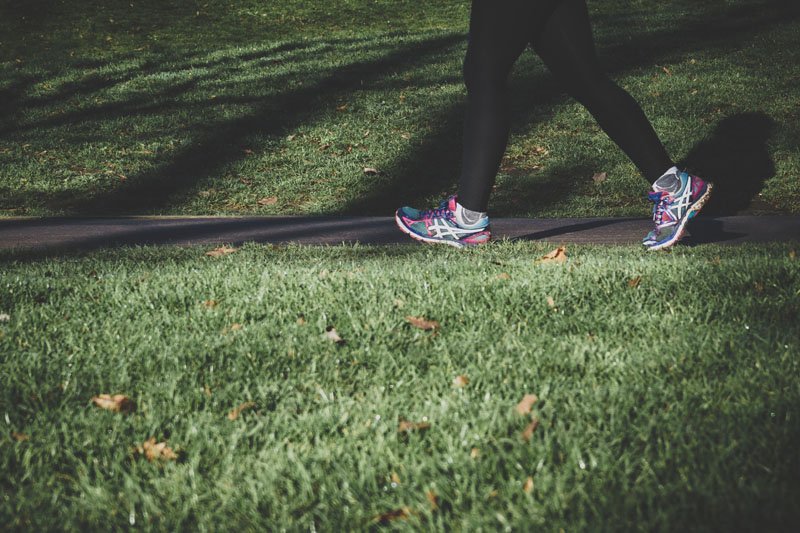 Adult
Adult
Study finds older adults who remain more active have a better quality of life
A reduction in the amount of time spent physically active when adults are over 60 years old is linked to lower quality of life, a Cambridge study of almost 1,500 adults has shown.
The same was also true for increases in the amount of sedentary time, such as watching TV or reading. The researchers say this highlights the need to encourage older adults to remain active.
Physical activity – particularly when it is moderate-intensity and raises your heart rate – is known to reduce the risk of a number of diseases, including heart disease, stroke, diabetes and cancer. The NHS recommends that adults do at least 150 minutes of moderate-intensity activity or 75 minutes of vigorous-intensity activity a week. Older adults are also recommended to break up prolonged periods of being sedentary with light activity when physically possible, or at least with standing, as this has distinct health benefits for older people.
A team led by researchers at the University of Cambridge examined activity levels among 1,433 participants aged 60 and above using accelerometers. The participants had been recruited to the EPIC (European Prospective Investigation into Cancer)-Norfolk study.
Alongside this, the team also looked at health-related quality of life, a measure of health and wellbeing that includes pain, ability to care for yourself and anxiety/mood. Participants were given a score between 0 (worst quality of life) and 1 (best) based on their responses to a questionnaire. Lower quality of life scores are linked with an increased risk of hospitalisation, worse outcomes following hospitalisation, and early death.
Participants were followed up an average of just under six years later to look at changes in their behaviour and quality of life. The results of the study are published in Health and Quality of Life Outcomes.
On average, six years after their first assessment, both men and women were doing around 24 minutes less moderate-to-vigorous physical activity per day. At the same time, the total sedentary time increased by an average of around 33 minutes a day for men and around 38 minutes a day for women.
Those individuals who did more moderate-to-vigorous physical activity and spent less time sedentary at their first assessment had a higher quality of life later on. An hour a day spent more active was associated with a 0.02 higher quality of life score.
For every minute a day less of moderate-to-vigorous physical activity measured six years after the first assessment, quality of life scores dropped by 0.03. This means that an individual who spent 15 minutes a day less engaged in such activity would have seen their score drop by 0.45.
Increases in sedentary behaviours were also associated with poorer quality of life – a drop in the score of 0.012 for everyone minute a day increase in total sedentary time six years after the first measurement. This means that an individual who spent 15 minutes a day more sitting down would have seen their score drop by 0.18.
To put the results into a clinical context, a 0.1 point improvement in quality of life scores has previously been associated with a 6.9% reduction in early death and a 4.2% reduction in risk of hospitalisation.
Dr Dharani Yerrakalva from the Department of Public Health and Primary Care at the University of Cambridge said: “Keeping yourself active and limiting – and where you can, breaking up – the amount of time you spend sitting down is really important whatever stage of life you’re at. This seems to be particularly important in later life, when it can lead to potentially significant improvements to your quality of life and your physical and mental wellbeing.”
Because the team measured physical activity and sedentary behaviour at different points of time, they say they can be reasonably confident that they have shown a causal link – that is, that quality of life improves because people remain more physically active, for example.
Dr Yerrakalva added: “There are several ways in which improvements in our physical behaviours might help maintain a better quality of life. For example, more physical activity reduces pain in common conditions such as osteoarthritis, and we know that being more physically active improves muscle strength which allows older adults to continue to care for themselves. Similarly, depression and anxiety are linked to quality of life, and can be improved by being more active and less sedentary.”
The EPIC-Norfolk study is funded by the Medical Research Council and Cancer Research UK.
Five ways to keep yourself physically-active in older age
A brisk daily walk – ideally for around 20 minutes
Gardening
A bicycle ride
Dancing
Tennis
Support Our Journalism
We cannot do without you.. your contribution supports unbiased journalism
IBNS is not driven by any ism- not wokeism, not racism, not skewed secularism, not hyper right-wing or left liberal ideals, nor by any hardline religious beliefs or hyper nationalism. We want to serve you good old objective news, as they are. We do not judge or preach. We let people decide for themselves. We only try to present factual and well-sourced news.







